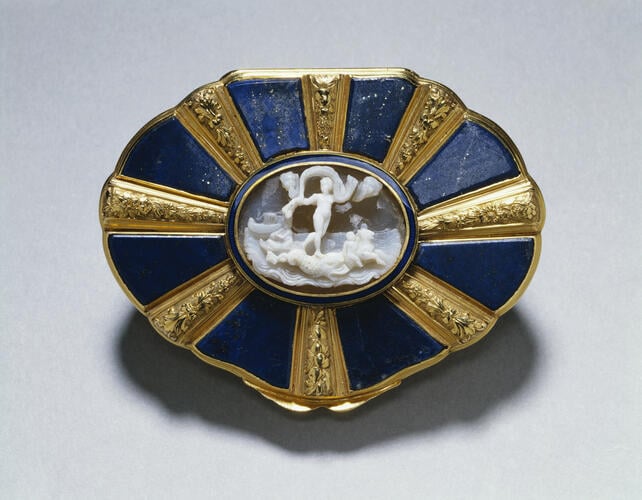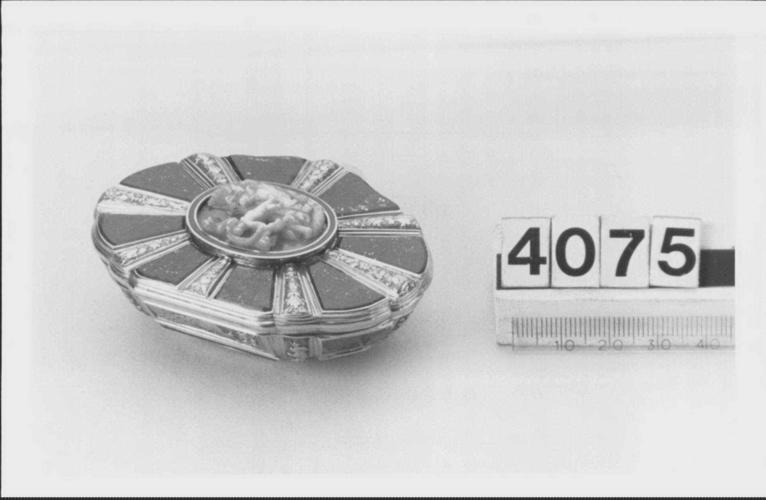-
1 of 253523 objects
Snuff box with a cameo of the Birth of Venus Cameo: 2nd half 16th c. box: probably German c. 1740
Onyx: white on translucent white; lapis-lazuli, moss agate and gold | 3.1 x 7.6 x 5.9 cm (with fittings) | RCIN 4075
-
Cartouche-shaped, gold and lapis lazuli snuff box with tapering sides and oval agate base. The lid is formed from alternate panels of lapis and gold, chased with scrolls, fruit, flowers, birds, cornucopia and animals. The hinged lid is inset with an onyx cameo depicting the Birth of Venus. In the centre, the goddess stands on a dolphin and holds a length of billowing drapery. She is flanked by two putti riding a hippocamp and a dolphin, and an ark-like ship sails on the horizon.
Although it is not known where the snuffbox was made or by whom, boxes incorporating semi-precious hard stones within gold mounts are usually associated with German makers in the eighteenth century, in particular the lapidaries and goldsmiths of Dresden.
Such snuffboxes often incorporated earlier ‘precious’ elements such as cameos, intaglios, enamels and ivories and this cameo is a late sixteenth-century, North Italian cameo with a subject popular during the Renaissance.Provenance
King George V and Queen Mary formed an important collection of gold boxes. They were a popular choice of gift to the King. This box was a gift from Edward Cecil Guinness, 1st Earl of Iveagh (1847-1927) on the King’s birthday, 3 June 1920.
-
Creator(s)
(nationality)Acquirer(s)
-
Medium and techniques
Onyx: white on translucent white; lapis-lazuli, moss agate and gold
Measurements
3.1 x 7.6 x 5.9 cm (with fittings)
2.3 x 2.9 cm (cameo)
Category

